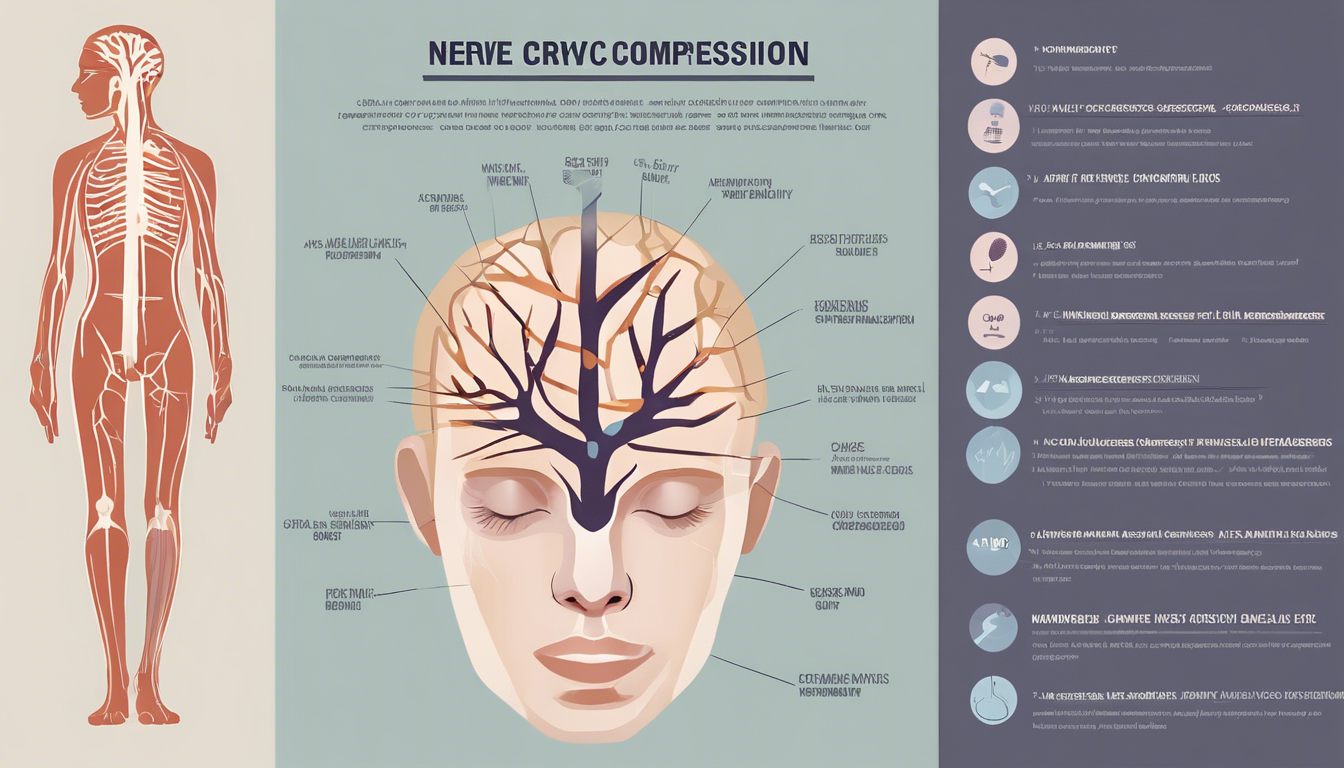Nerve compression is a condition that occurs when nearby tissues apply pressure to a nerve, potentially leading to uncomfortable and sometimes debilitating symptoms.
In this article, we will explore the various aspects of nerve compression, including how to recognize its signs, identify its causes, and discuss effective treatment options.
Whether you’re experiencing symptoms yourself or simply want to learn more about this prevalent condition, our comprehensive guide aims to demystify nerve compression and provide practical strategies for prevention and management.
Your Sciatica Pain-Free Future Starts Here – Click to Learn More!
Key Takeaways
- Nerve compression occurs when surrounding tissues put pressure on a nerve, leading to various symptoms.
- Common symptoms include tingling, numbness, and pain in the affected area.
- Causes of nerve compression can range from repetitive motions to injury or underlying medical conditions.
- Diagnosing nerve compression typically involves a physical exam and imaging studies to identify the affected nerve.
- Effective treatments may include physical therapy, medication, or surgery, alongside preventative strategies to avoid future episodes.
What is Nerve Compression?
Nerve compression, often referred to as nerve entrapment, occurs when surrounding tissues such as bones, cartilage, muscles, or tendons place excessive pressure on a nerve, disrupting its normal function.
This can lead to a range of symptoms, from pain and numbness to tingling sensations or muscle weakness in the affected area.
Common conditions associated with nerve compression include carpal tunnel syndrome, where the median nerve is compressed at the wrist, and sciatica, which occurs when the sciatic nerve is pinched in the lower back.
Understanding nerve compression is crucial for anyone experiencing these symptoms, as it highlights the importance of seeking early intervention and treatment, which may involve physical therapy, lifestyle changes, or in some cases, surgical options to relieve the pressure and restore normal nerve function.
Common Symptoms of Nerve Compression
Nerve compression occurs when surrounding tissues place pressure on a nerve, leading to a range of unsettling symptoms that can affect anyone, regardless of age or activity level.
Common indicators of nerve compression can include tingling sensations, often described as pins and needles, which may radiate through the affected area.
Patients may also experience sharp or burning pain, frequently making everyday tasks uncomfortable or even unbearable.
Muscle weakness in the areas supplied by the compressed nerve is another telltale sign, making activities such as gripping objects or lifting challenging.
Additionally, individuals might notice reduced sensitivity, where they struggle to feel touch or temperature changes, further complicating their daily interactions.
It’s essential to recognize these symptoms promptly, as early intervention could prevent more severe complications down the line.
If you find yourself grappling with these sensations, consulting a healthcare professional is a crucial step towards reclaiming your comfort and mobility.
‘The greatest discovery of my generation is that a human being can alter his life by altering his attitudes.’ – William James
Causes of Nerve Compression
Nerve compression occurs when surrounding tissues apply excessive pressure on a nerve, leading to a variety of symptoms such as pain, numbness, and weakness.
Several key factors can contribute to this condition, including repetitive motions, poor posture, and certain medical conditions like diabetes or arthritis.
For instance, repetitive tasks that require the same hand motions, such as typing or assembly line work, can cause the muscles and tendons in the wrist to swell, ultimately putting pressure on the median nerve, a condition commonly known as carpal tunnel syndrome.
Additionally, being overweight can increase the likelihood of nerve compression due to added pressure on the nerves, particularly in areas like the lower back.
Even certain positions during sleep can lead to temporary nerve compression, making awareness of posture and ergonomics essential for prevention.
Understanding these causes can empower individuals to make lifestyle adjustments and seek proper medical treatment when necessary.
Your Sciatica Pain-Free Future Starts Here – Click to Learn More!
Diagnosis of Nerve Compression
Diagnosing nerve compression involves a thorough evaluation by a healthcare professional, typically beginning with a comprehensive medical history and a physical examination.
The physician will assess symptoms such as pain, tingling, or numbness in specific areas, often asking about the onset and severity of these issues.
To pinpoint the problem, diagnostic tests may be employed, including nerve conduction studies and electromyography, which help assess the electrical activity and functionality of the nerves and muscles affected.
Imaging tests such as MRI or ultrasound can also provide valuable insight by visualizing structures around the nerves, identifying any anatomical abnormalities that may be contributing to compression.
This multifaceted approach ensures a detailed understanding of the condition, guiding the appropriate treatment options and improving the chances of recovery.
Effective Treatments for Nerve Compression
Nerve compression is a common condition that can lead to discomfort, pain, and reduced function in affected areas, but various effective treatments are available to alleviate these symptoms.
Initially, conservative therapies such as physical therapy, which focuses on stretching and strengthening surrounding muscles, can provide significant relief by improving mobility and reducing pressure on the nerve.
Other non-invasive options include the use of anti-inflammatory medications to manage pain and swelling.
For those who find limited improvement through conservative methods, corticosteroid injections can serve as a powerful tool to target the inflammation around the compressed nerve.
In more severe cases, or when conservative treatments fail to provide adequate relief, surgical interventions may be necessary to relieve the pressure directly by decompressing the affected nerve.
Regardless of the approach, it’s essential to consult with a healthcare professional to determine the most appropriate and effective treatment plan tailored to your specific condition and lifestyle.
FAQs
What is nerve compression?
Nerve compression occurs when there is pressure on a nerve, leading to symptoms such as pain, numbness, and weakness in the affected area.
It can happen due to various reasons, including injury, repetitive motions, or underlying medical conditions.
What are the common symptoms of nerve compression?
Common symptoms include tingling or numbness in the affected area, sharp pain, weakness, or a feeling of ‘pins and needles’.
These symptoms often worsen with activity or prolonged pressure.
What causes nerve compression?
Nerve compression can be caused by several factors, including injury, repetitive activities, anatomical differences, herniated discs, arthritis, or other conditions that lead to swelling or inflammation around nerves.
How is nerve compression diagnosed?
Diagnosis of nerve compression typically involves a physical examination, a review of your medical history, and possibly imaging tests like MRIs or X-rays, as well as nerve conduction studies to assess electrical activity in the nerve.
What are the effective treatments for nerve compression?
Effective treatments for nerve compression may include rest, physical therapy, medications for pain relief, corticosteroid injections, and in some cases, surgery to relieve pressure on the nerve.




